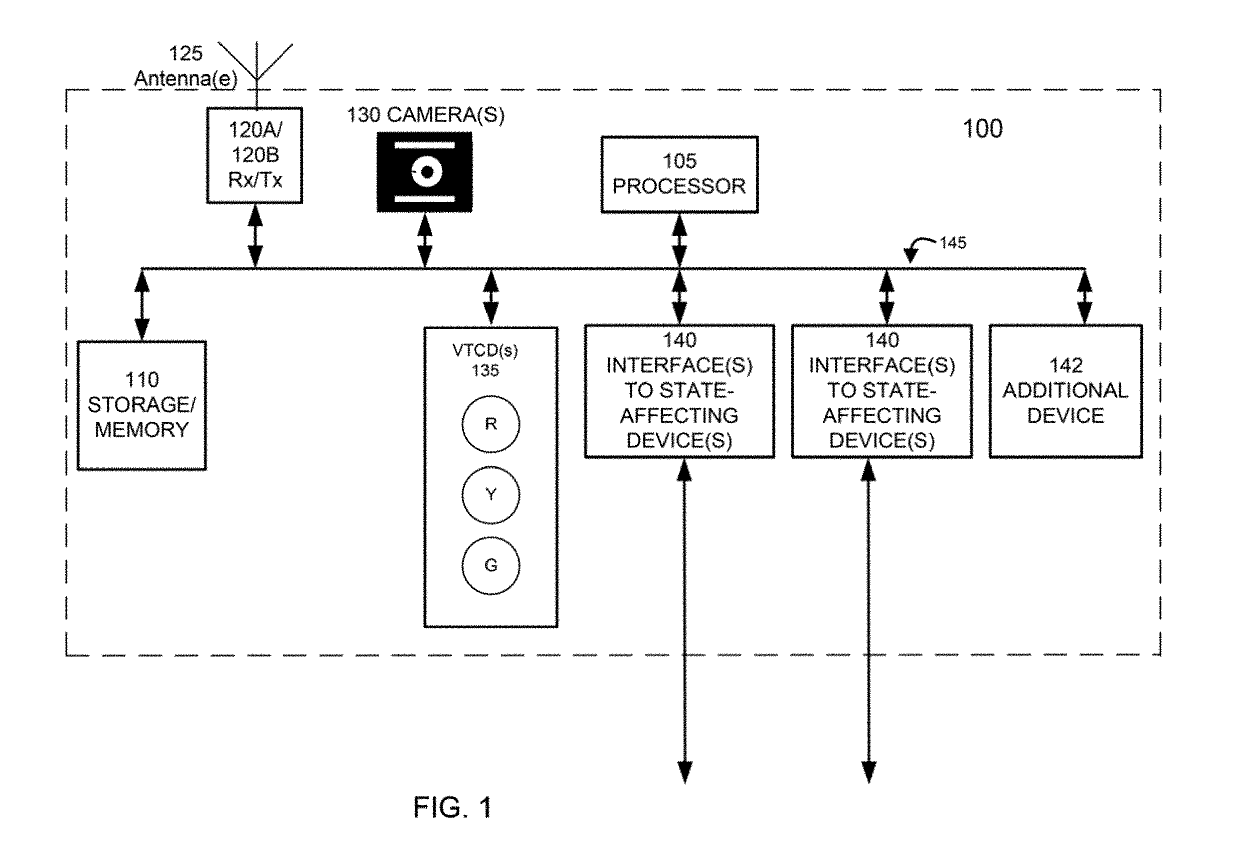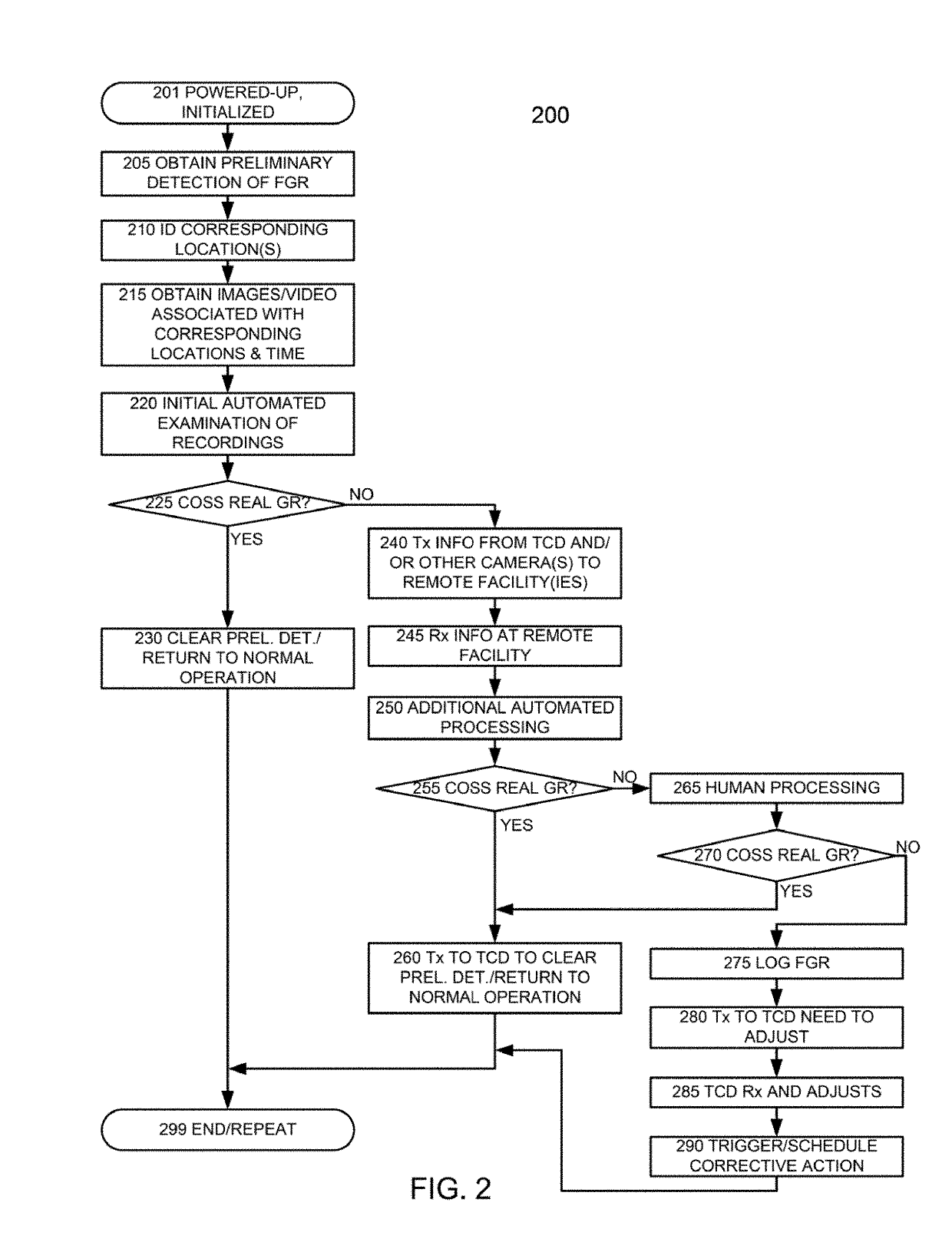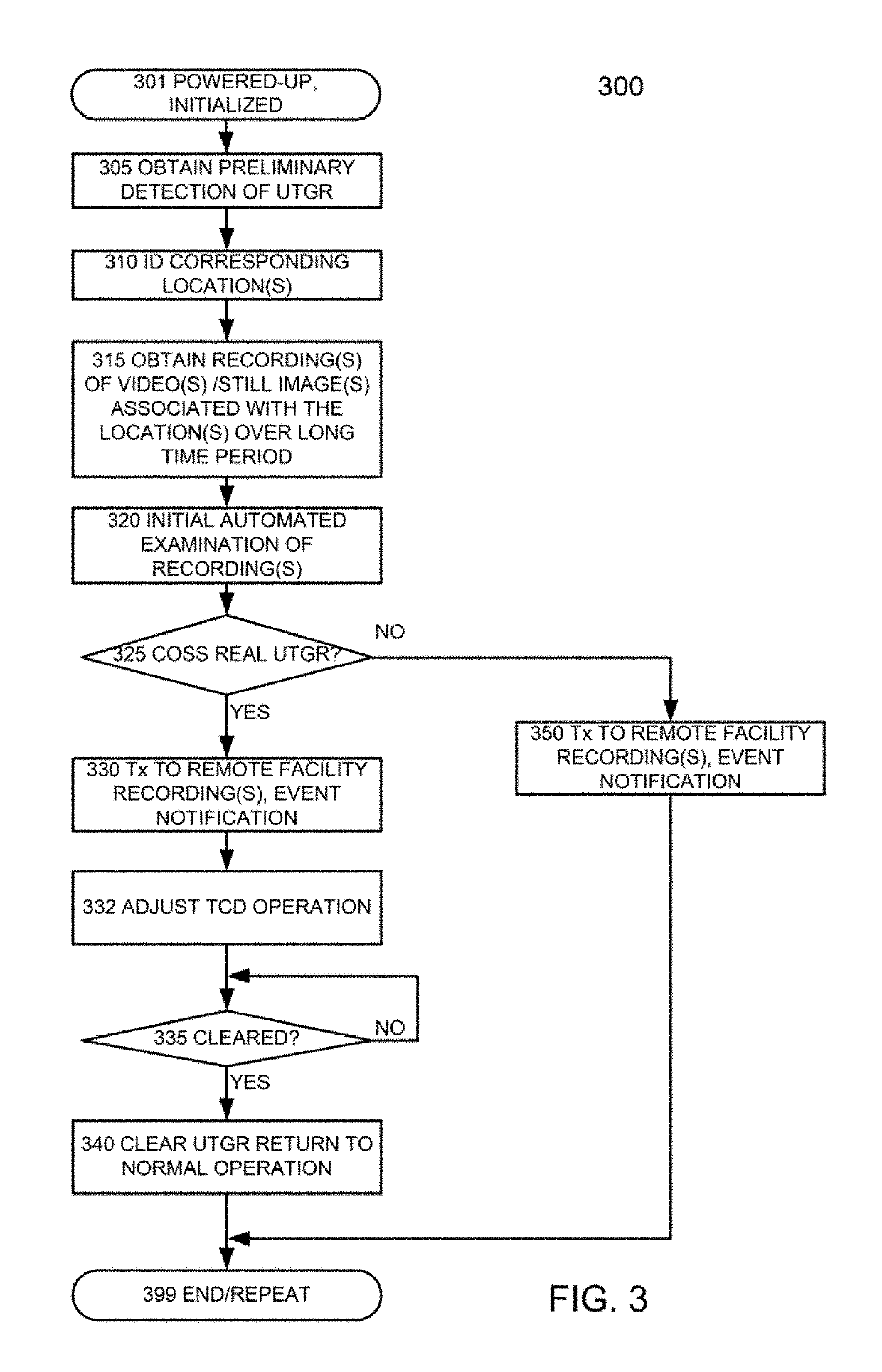Smart traffic control devices and beacons, methods of their operation, and use by vehicles of information provided by the devices and beacons
- Summary
- Abstract
- Description
- Claims
- Application Information
AI Technical Summary
Benefits of technology
Problems solved by technology
Method used
Image
Examples
Embodiment Construction
[0048]The words “embodiment,”“variant,”“example,”“implementation,” and similar words and expressions as used in this document refer to a particular apparatus, process, or article of manufacture, and not necessarily to the same apparatus, process, or article of manufacture. Thus, “one embodiment” (or a similar word / expression) used in one place or context may refer to a particular apparatus, process, or article of manufacture; the same or a similar expression in a different place or context may refer to a different apparatus, process, or article of manufacture. The expression “alternative embodiment” and similar words and phrases are used to indicate one of a number of different possible embodiments, variants, or examples. The number of possible embodiments, variants, or examples is not necessarily limited to two or any other quantity. Characterization of an item as “exemplary” means that the item is used as an example. Such characterization does not necessarily mean that the embodim...
PUM
 Login to View More
Login to View More Abstract
Description
Claims
Application Information
 Login to View More
Login to View More - R&D
- Intellectual Property
- Life Sciences
- Materials
- Tech Scout
- Unparalleled Data Quality
- Higher Quality Content
- 60% Fewer Hallucinations
Browse by: Latest US Patents, China's latest patents, Technical Efficacy Thesaurus, Application Domain, Technology Topic, Popular Technical Reports.
© 2025 PatSnap. All rights reserved.Legal|Privacy policy|Modern Slavery Act Transparency Statement|Sitemap|About US| Contact US: help@patsnap.com



